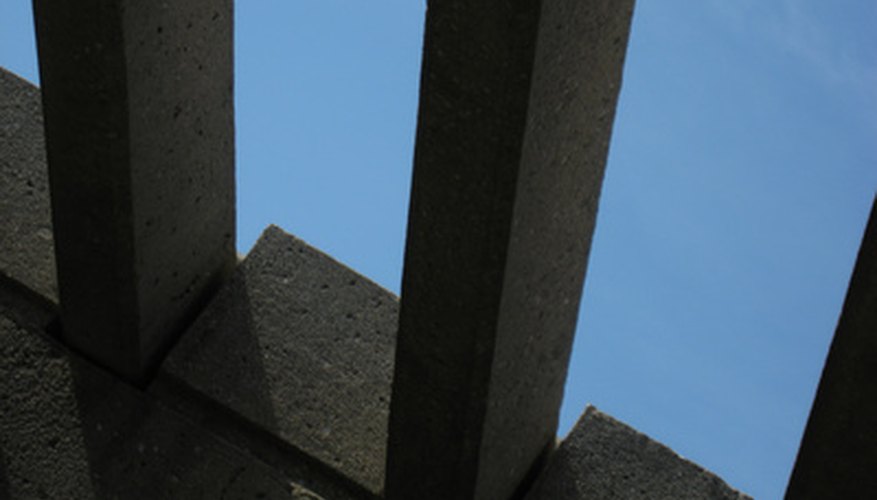Glulam beams have several advantages over their solid wood counterparts. They are less expensive and, when properly constructed, more dimensionally stable. Since laminated beams are made up of many thin, flexible strips of wood glued together, it is also easier to fabricate a curved or specially shaped beam than it is to carve the same shape out of a larger block of solid wood.
Materials
You can fabricate a laminated beam using a number of materials. For interior structural work, pine, plywood or even oriented strand board (OSB) can be used and bonded with woodworking glue. If your application requires the beam to be exposed to the weather, use a rot- and water-resistant wood. Bond the layers with an epoxy adhesive and protect the beam with UV-resistant paint or spar varnish.
- You can fabricate a laminated beam using a number of materials.
- For interior structural work, pine, plywood or even oriented strand board (OSB) can be used and bonded with woodworking glue.
Layout
Determine the required dimensions of your beam. Divide the thickness of your beam by the thickness of your material to determine how many strips you will need. If your beam is longer than your material, stagger the joints in each layer. Joints on adjoining layers should be at least six inches apart.
- Determine the required dimensions of your beam.
- Divide the thickness of your beam by the thickness of your material to determine how many strips you will need.
Dimensioning
Set the rip fence on your table saw 1/8 inch wider than the desired height for your beam. This material will be removed after gluing. Rip two or three extra strips to allow sufficient material to stagger your joints.
Stacking
Stack the strips to form the beam. Numbering each strip with a pencil as you stack it will make it easier to reconstruct the beam after you make your final end cuts. You will be dry fitting only at this point. Stacking the strips will allow you to adjust joint spacing. Use a square to mark the ends of the beam for length.
- Stack the strips to form the beam.
- Stacking the strips will allow you to adjust joint spacing.
Trimming
Remove the strips from the stack and cut the end pieces to length with a circular saw.
Gluing
Place the first layer of strips on a level surface. Use a clean paintbrush to spread an even coat of adhesive over the entire surface of the first layer of material. Stack the next layer of strips on top of the first. Apply another layer of adhesive to the top of the second layer. Continue applying adhesive and stacking until you reach the last layer.
- Place the first layer of strips on a level surface.
- Apply another layer of adhesive to the top of the second layer.
Clamping
Clamping your beam is a critical step. For a 10-foot long beam, use at least 30 clamps. Place small, thin pieces of scrap between the jaws of the clamps and the surface of your beam to protect the surface of your material. Place your clamps no more than 12 inches apart along both sides of the beam. Place two clamps on each end of the beam. Tighten the clamps until you get an even squeeze-out of adhesive on all of the layers. Allow the adhesive to cure for at least 24 hours.
- Clamping your beam is a critical step.
- Place your clamps no more than 12 inches apart along both sides of the beam.
Finish
Remove the clamps. Remove the dried squeeze-out with a scraper. Use a power planer to smooth the top and bottom of the beam and reduce it to your finished dimension.
